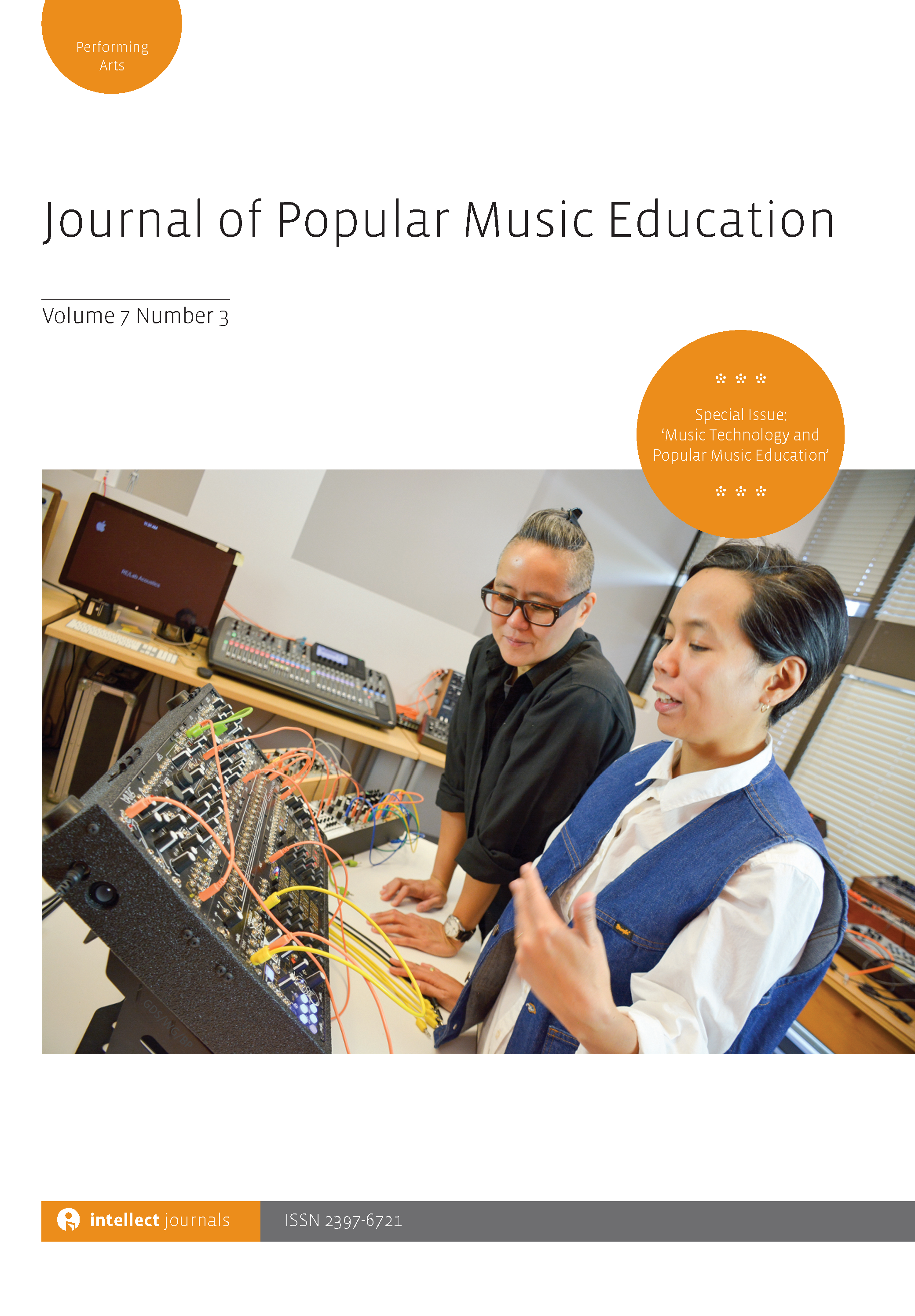
Full text loading...

This study examined the effects of the Junior Rock Music Academy (JRMA) on participants’ (N = 39) confidence and self-esteem. The JRMA was a widening participation Saturday music programme developed to reduce the influences of poverty on educational underachievement for young people (10–18 years) from poorer families across South East Wales. Participants’ confidence and self-esteem scores reported a significant rise, with no significant difference reported between genders or age groups. Participants (N = 5), programme tutors (N = 3) and participant parents/guardians (N = 4) were interviewed using semi-structured interviews to establish the fidelity of the structure and content of the intervention. The impact of JRMA on the psychosocial, cultural and emotional characteristics of participants and their parents/guardians as barriers to educational attainment and preparedness to thrive in education are discussed; these include enhanced cognitive development, social and emotional skills and learner motivation.

Article metrics loading...

Full text loading...
References


Data & Media loading...

Publication Date:
https://doi.org/10.1386/jpme_00044_1 Published content will be available immediately after check-out or when it is released in case of a pre-order. Please make sure to be logged in to see all available purchase options.